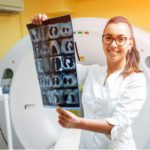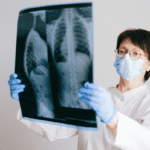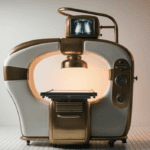There is no doubt that X-ray is a vital imaging tool, but many studies question the connection between imaging radiation and the risks of cancer. Although many believe these studies rely on unproven statistical models and have serious flaws, understanding and managing risks in radiology practice remains crucial. Especially with how so many startups, such as Prenuvo and Ezra, are encouraging preventive health full-body MRIs.
Medical imaging is not a static technology; it is expected to evolve in the future as it has been evolving for the last 50 years. This is why radiology professionals have no way but to stay updated about new studies, emerging risks, and strategies to manage these risks because this is about ensuring the safety and well-being of both their teams and patients. Navigating risks is key to a successful radiology practice.
Understanding Radiology Risks
Here are some risks you should be aware of as a radiology professional.
- Radiation-related Health Effects
High doses of radiation are known to cause damage to human cells, potentially leading to skin burns, hair loss, and an increased incidence of cancer. Although there is no direct scientific proof that low doses used in medical imaging increase cancer risk, the assumption persists, making radiation exposure a crucial risk to manage.
- Patient Safety Concerns
According to a study in the journal Radiology, many patients expressed their desire to learn and have information from a healthcare professional they trust, about the process of the tests, its effects, alternative solutions, specific test orders, and testing intervals.
Many other professionals in the field of healthcare also argue the potential of full-body imaging to detect asymptomatic conditions early, and caution against their widespread use due to possible false positives, unnecessary anxiety, and the overuse of medical resources.
- Legal and Ethical Considerations
There are also legal requirements you have to follow as a radiology professional should you choose to use technological innovation to choose the best for your patient. As a responsible healthcare professional, your duty is to ensure that you have your patient’s informed consent. If you are choosing a treatment method, you should also let your patient know about the possible risks and if there are other alternatives, regardless of your opinion on what they should choose.
Identifying & Mitigating Risks Through Best Practices
As a radiology professional, your ability to provide the best for your patient comes only with identifying and mitigating risks. Medical Imaging professionals must be proactive in addressing procedures, safety, policies, and practices to effectively manage risks.
- Methods for Identifying and Assessing Risks
Radiology procedures have many risks and hazards associated with it for both radiology teams and patients. These risks include risks associated with ionizing radiation exposure, misdiagnosis, patient care issues, and environmental conditions. It’s also about evaluating who might be harmed—patients, staff, visitors—and understanding how harm could occur, such as through slip and fall injuries or adverse outcomes.
- Best Practices for Mitigating Risks
It is not about whether there are safety protocols only, but also about whether the professional understands how deeply important it is to follow. Mitigating risks requires strict adherence to safety protocols, equipment maintenance, and robust patient safety measures. Developing and implementing protection standards and practice patterns is crucial to reducing or eliminating identified risks.
Role of Continuing Education (CE) in Risk Management
At the start of this blog, we stressed how crucial it is for healthcare pros to keep up-to-date. That’s why it’s perfect to dive into the significance of continuing education in helping them stay sharp and ready for any new developments in their field.
Continuing education (CE) is vital in risk management and quality improvement. As a radiology professional, you gain the latest knowledge and key skills needed to identify, assess, and mitigate risks effectively. GetYourCEU, for example, offers courses like Pediatric CT Radiation Safety, Radiation Protection, etc., that make professionals well-prepared to manage the complexities and challenges of modern medical imaging.
Conclusion: Building a Culture of Safety
When it comes to imaging technology, both healthcare professionals who operate the machinery and patients who receive treatment are at some amount of risk.
This is why it is so important for both healthcare professionals and their patients to be aware of future risks, and CE for professionals can be a way to foster a culture of safety and continuous improvement. CE helps professionals understand and communicate these risks to patients, creating a safer environment for all.




